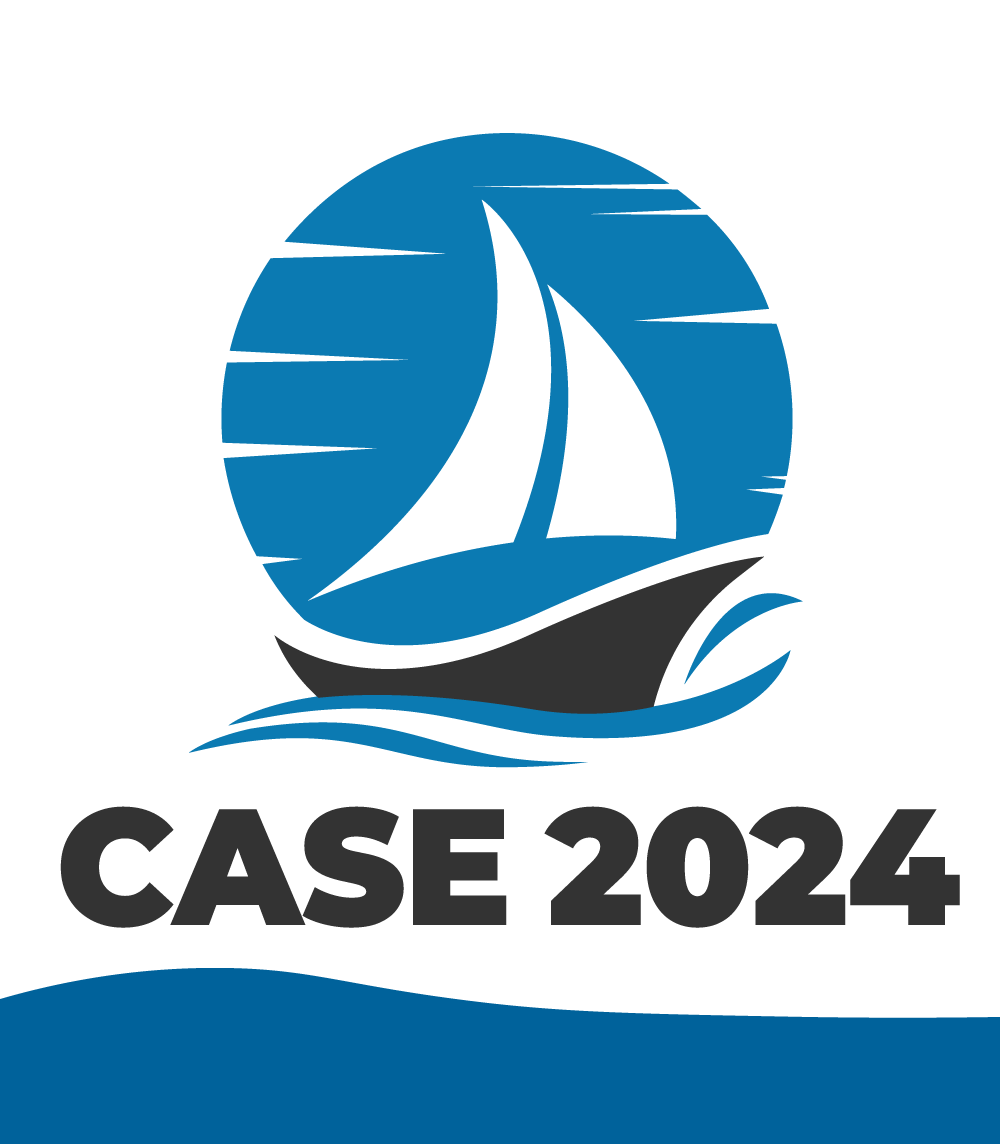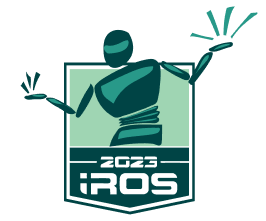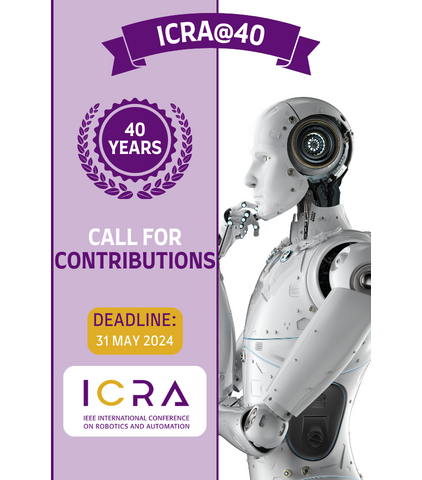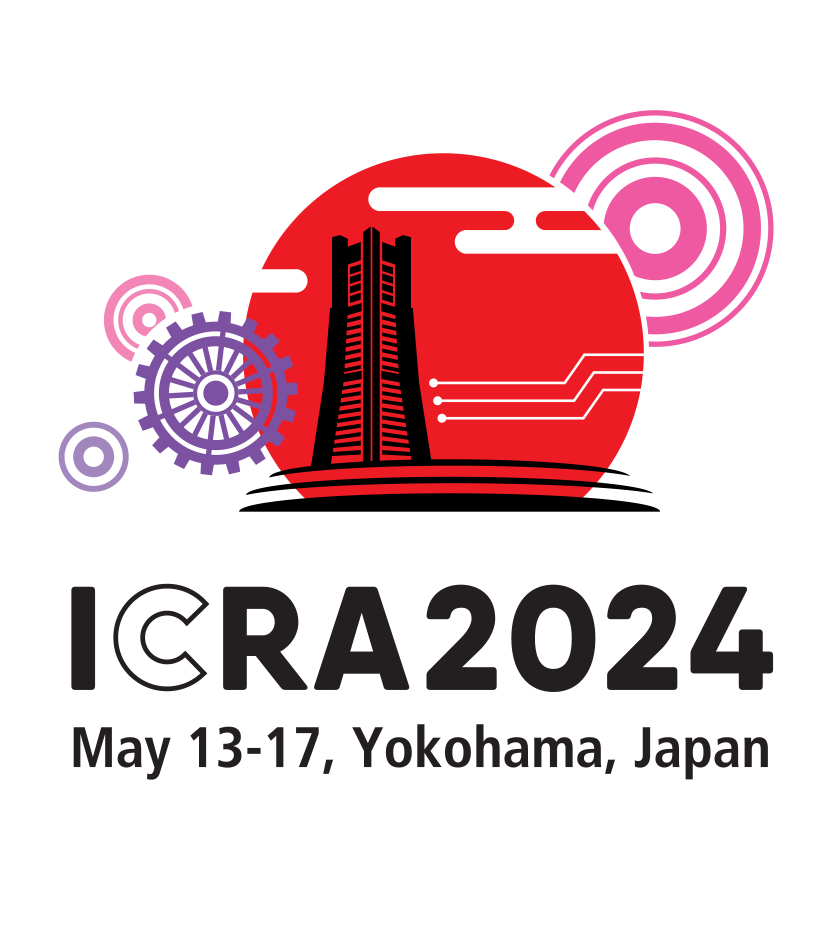T-RO Information for Authors
Presenting Your IEEE Transactions on Robotics Paper at ICRA, IROS, or CASE
IEEE Transactions on Robotics (T-RO) papers (other than communication items, evolved papers, and survey papers) are eligible to be presented at an upcoming IEEE International Conference on Robotics and Automation (ICRA), IEEE/RSJ International Conference on Intelligent Robots and Systems (IROS), or International Conference on Automation Science and Engineering (CASE). For more information, please see http://www.ieee-ras.org/publications/t-ro.
Scope
T-RO publishes fundamental papers on all aspects of robotics, featuring interdisciplinary approaches from computer science, control systems, electrical engineering, mathematics, mechanical engineering, and other fields. Robots and intelligent machines and systems are critical in areas such as industrial applications; service and personal assistants; surgical operations; space, underwater, and remote exploration; entertainment; safety, search, and rescue; military applications; agriculture applications; and intelligent vehicles. Special emphasis is placed on intelligent machines and systems for unstructured environments, where a significant portion of the environment is unknown and cannot be directly sensed or controlled.
Examples of topics that fall within the scope of T-RO include:
- Design: mechanisms and actuation; robots with flexible elements; limbed structures; parallel and hybrid mechanisms; robot hands; snake-like and continuum robots; soft robots; modular robots; biomimetic and bioinspired robots; wheeled robots; underwater robots; flying robots; micro/nano robots; performance evaluation and optimization; modeling, identification, calibration
- Sensing and Perception: foundations of sensing and estimation; force and tactile sensing; range, sonar, and inertial Sensing; GPS and odometry; 3-D vision; object recognition; visual servoing; multisensor data fusion
- Manipulation, Interfaces, and Programming: motion and force planning and control for manipulation tasks; contact modeling and manipulation; grasping; cooperative manipulation; mobility and manipulation; haptics; active manipulation for perception; telerobotics; networked robots; robotic systems architectures and programming
- Moving in the Environment: world modelling; simultaneous localization and mapping (SLAM); motion planning and obstacle avoidance; modelling and control of legged robots, wheeled mobile robots, robots on rough terrain, underwater robots, aerial robots, and multiple mobile robot systems
- Robots at Work: industrial robotics; space robotics; robotics in agriculture and forestry; robotics in construction; robotics in hazardous applications; robotics in mining; search and rescue robotics; robot surveillance and security; intelligent vehicles; medical robotics and computer-integrated surgery; rehabilitation and healthcare robotics; domestic robotics
- Robots and Humans: humanoids; physical and cognitive human-robot interaction; human-robot augmentation; social and socially assistive robotics; learning from humans; behavior-based systems; AI reasoning methods for robotics; biologically-inspired robotics; evolutionary robotics; neurorobotics; perceptual robotics; roboethics
ORCID
All IEEE journals require an Open Researcher and Contributor ID (ORCID) for all authors. ORCIDs enable accurate attribution and improved discoverability of an author’s published work. The author will need a registered ORCID in order to submit a manuscript or review a proof in this journal.
Follow these steps to link a PaperCept account to a registered ORCID. Note that PINs from different sub-domains can be linked to a single ORCID.
- Go to https://ras.papercept.net/
journals/tro/scripts/login.pl. Create a PIN if you do not have one. - If you do not already have an ORCID, follow the link “Register an ORCID,” create an ORCID and return to the PaperCept login page.
- Follow the link “Register your ORCID with any of your PaperCept PINs,” enter your registered email or the ORCID and password and then click on Authorize.
- Once you authorize the ORCID to be linked to your PIN you will be returned to the PaperCept subdomain from where you accessed ORCID.
- Follow “Log in to any account associated with this ORCID” to complete associating your PIN to the ORCID.
- If you have inadvertently created multiple PINs in the same subdomain, you can associate all PINs with the same ORCID.
First-Time Authors
If you have not previously submitted a paper to T-RO, you are strongly encouraged to peruse recent issues to familiarize yourself with the style and technical level of typical T-RO articles. You are also strongly encouraged to read Surviving the Review Process by former EiC Seth Hutchinson.
Peer Review Model
The articles in this journal are peer reviewed in accordance with the requirements set forth in the IEEE Publication Services and Products Board Operations Manual (https://pspb.ieee.org/images/files/files/opsmanual.pdf). Each published article was reviewed by a minimum of two independent reviewers using a single-anonymous peer review process, where the identities of the reviewers are not known to the authors, but the reviewers know the identities of the authors.
Reviewing Responsibilities of T-RO Authors
Types of Submissions and Page Limits
The IEEE TRANSACTIONS ON ROBOTICS publishes evolved papers, regular papers, communication items, and survey papers. If a paper is intended for a Special Issue with an open call for papers, the submission's cover letter must clearly state this.
- Evolved papers are similar to regular papers (see below), except that they build on the authors' previously-published conference work. An advantage of having your paper be considered "evolved" is that you are free to incorporate much of the material from your conference paper(s) without penalty in the review process, provided the new paper provides a significant contribution beyond the conference paper(s). The disadvantage is that an accepted "evolved" paper is not eligible for presentation at ICRA, IROS, or CASE. Evolved papers must declare their relationship to the previously-published conference work; more details can be found below.
- Regular papers describe a significant result or set of results that are original, of high impact and significance, and extend the state-of-the-art in robotics. If you declare your submission to be "regular" instead of "evolved," you may not re-use a significant amount of material from any of your previous conference papers. Accepted regular papers will be invited for presentation at ICRA, IROS, or CASE.
Regular and evolved paper submissions may be a maximum of 20 pages long in Transactions format (see Manuscript Preparation for more details on the format). For the final version of accepted regular and evolved papers, a mandatory page charge (see below) applies to each page beyond 12, up to a maximum of 20 pages.
- Communication items are a class of short manuscripts that are subject to an expedited review process. Appropriate items include (but are not limited to) rebuttals and/or counterexamples of previously published papers. Normally the editors will review these submissions internally, requesting outside review when appropriate and "closure" comments from the original authors if the communication item is a rebuttal or correction by different authors. Communication submissions may be a maximum of 4 pages long in Transactions format (see Manuscript Preparation for more details on the format). For the final version of an accepted communication item, a mandatory page charge (see below) applies to each page beyond 3, up to a maximum of 4 pages.
-
Survey papers should cover emerging research topics in Robotics or have a tutorial or review nature of sufficiently large interest to the Transactions audience. Authors of survey papers must submit a proposal, as a single self-contained pdf file, to the Editor-in-Chief prior to submission. This proposal should address the need for the survey article (including the potential audience, T-RO relevance, and an analysis of any existing survey papers on the general topic), give a summary of the authors' qualifications to write the survey (a survey article should be written by leading experts in the field, and it is generally preferred that a survey be a joint effort among research groups at different institutions who are not frequent collaborators), and provide a proposed bibliography. (If the paper is already written, you should provide the paper itself in place of the bibliography.) The EiC, in conjunction with the Senior Editorial Board, will then determine whether the proposed article may be submitted for review.
A good survey paper must be more than an organized list of references. It must provide an authoritative and useful perspective and organization of the history and the state of the art of the field. It should include important references but leave out those that are minor or derivative contributions. The survey should not be biased toward the authors' own work. It should organize the material according to themes as appropriate (for example, applications or principles or technologies employed), and it should provide fair comparisons or critiques where appropriate. The authors should be acknowledged experts in the field. In short, a good survey paper should provide a perspective and distillation of the field that is a significant contribution in itself.
Survey papers may be a maximum of 20 pages long in Transactions format (see Manuscript Preparation for more details on the format). For the final version of a survey paper, a mandatory page charge (see below) applies to each page beyond 14, up to a maximum of 20 pages.
The extra page charge, beyond the limits mentioned above, is $175 per page.
Multipart papers will only be published if there is compelling rationale for a multipart treatment. All parts of such submissions must be accepted for any part to be published.
Papers submitted to a special issue are handled similarly to normal contributions.
Manuscript Evaluation Decisions
Rejected Manuscripts
Manuscripts that have substantial deficiencies, for example, with respect to their presentation or the state of the art should be rejected. Authors of a rejected manuscript should receive a detailed justification of the causes for rejection. Authors of rejected manuscripts are discouraged from submitting a revised version. However, they are not prevented. If authors submit a revised version of a previously rejected manuscript, they are expected to provide a statement of changes justifying the reasons for a resubmission. The EiC will normally assign the resubmitted manuscript to the SE and AE supervising the previously rejected manuscript unless they are retired in the meantime. The editorial board will carefully analyze resubmissions of previously rejected manuscripts and also consider an editorial reject decision for such manuscripts.
Revised and Resubmitted Manuscripts
A manuscript should receive a “revise and resubmit decision” if it contains deficiencies that can be corrected within a reasonable amount of time. If the decision on a submission to T-RO is “revise and resubmit” (RR), authors will be allowed to submit a revised version and a statement of changes. The revised manuscript should be formatted so that any changes can be easily identified by the reviewers, by using, e.g., colored or bold text to indicate revised passages. In addition to the largely revised version of a paper, the authors are required to also upload a single pdf file containing a reply to the comments provided by the reviewers and the list of changes made to the manuscript paper. After resubmission, the EiC will normally assign the manuscript to the SE and AE previously supervising the manuscript, unless they are retired in the meantime. Revised and resubmitted manuscripts are treated as novel submissions. A second “revise and resubmit” decision for such manuscripts should be avoided. Papers not reaching the bar for a “conditionally accept decision” should preferably be rejected.
Conditionally Accepted Manuscripts
A manuscript should receive a “conditionally accepted decision” if it contains minor deficiencies that can be corrected within 60 days. If the decision on a submission to T-RO is “conditionally accepted” (CA), authors will be allowed to submit a revised version and a statement of changes. The revised manuscript should be formatted so that any changes can be easily identified by the reviewers, by using, e.g., colored or bold text to indicate revised passages. In addition to the revised version of your conditionally accepted paper, the authors should also upload a single PDF file containing the authors’ reply to the comments provided by the reviewers and the list of changes made to the manuscript. The EiC will assign resubmissions of previously conditionally accepted manuscripts to the SE and AE supervising the previous version unless one or both of them have retired in the meantime. The evaluation of such a manuscript should take no longer than one month. The AE is expected to quickly evaluate the updated manuscripts potentially with the assistance of the reviewers assigned to the previous version. A second “conditionally accept decision” should be avoided.
Accepted Manuscripts
Manuscripts fulfilling all requirements for a publication in the IEEE Transactions on Robotics should receive an “accept decision”. Authors of accepted manuscripts are requested to prepare a final version of their manuscript strictly the indications provided in the reviews, if any. No other significant unreviewed changes (including to the bibliography and references) are allowed. The submission of the final version is due no later than 30 days from the notification date. When the final version of an accepted paper is received, the SE has the possibility to verify that all required changes have been made in the final version and may request the AE to provide support in this phase. Although rarely, an SE can withhold publication until all required changes are satisfactorily made. In case this can not be achieved by authors within 180 days from submission, the manuscript could be effectively withdrawn from publication.
Editorial (Summary) Rejections
Editorial reject decisions are to be used mainly for incomplete or otherwise clearly unsuitable papers (see below the official IEEE policy for more details). All editorial rejections must be approved by the EiC. If the reason for editorial rejection is a lack of technical contribution, IEEE rules require that at least three editors concur in such a decision. For these cases, the EiC and at least two members of the Editorial board (usually the SE and AE) have to consent. If an AE comes to the conclusion that an assigned manuscript should be summarily rejected, the AE informs the corresponding SE with a sufficiently detailed justification. If an SE thinks that a manuscript should be summarily rejected, the SE assigns it to an AE asking for the AE’s opinion. If both the AE and the SE agree that the paper should be summarily rejected, they generate a sufficiently detailed decision letter (typically drafted by the AE and revised by the SE). They then inform the EiC about their proposed decision, provide the EiC with a decision letter, and ask for approval. If the EiC, the SE, and the AE agree, the SE issues the editorial reject decision. The decision should not be executed without approval by the EiC. An editorial reject decision should be issued no later than three weeks after the submission. If the EiC, the SE, and the AE disagree in their assessment of the manuscript, it should be sent out for full review.
IEEE Policy Regarding Prescreening of Articles by Editors
Editors may prescreen articles immediately after they are submitted and before they are transmitted to referees for evaluation. The purpose of such prescreening is to verify that the article adheres to minimum criteria set forth by IEEE, as well as by the organizational unit responsible for the specific publication. Typical prescreening measures include the following:
- The author(s) have followed the IEEE guidelines for style.
- The author(s) have not obviously violated IEEE Policies.
- The article is comprehensible (in other words, not so poorly written that it is unreadable).
- The subject and contents of the article meet the scope of the periodical or a specific issue.
- The article meets a minimum criterion for technical substance established for the periodical.
If the Editor assesses that a submission has met prescreening criteria 3.a through 3.d but has not met criterion 3.e, the Editor shall consult with at least two members of the editorial board for concurrence. Rejection on the basis of criterion 3.e shall require the general agreement of the Editor and those consulted. An article is considered in review if it passes the prescreening process and is forwarded to referees. An “administrative reject” refers to an article that does not meet the prescreening measures and is, therefore, returned to the author(s) with explanation.
Open Access
T-RO policies on Open Access (OA) publishing are the same as general IEEE policies. The majority of all IEEE transactions, journals, and letters offer a hybrid option, which permits both traditional subscription-based content (which is free for the author, apart from possible fees such as over-length charges) as well as OA access, author-pays content. For all hybrid journals, the quality of the review process for OA and traditional articles is the same. Any OA papers published within a hybrid journal will be included in all media types offered by that title.
Some authors using government research funding or university consortium funding may be required to publish in OA journals. In addition, authors may choose to pay to publish to gain the largest possible audience for their work.
T-RO allows OA for authors who request it. This option is made available upon acceptance of the paper. Whether a paper will be OA or not is not known during the review process and does not affect the process.
The OA article processing charge (APC) for this publication is USD $2,495 for all articles accepted on or after 1 January 2024. Other applicable fees (e.g., over-length paper charges) remain unchanged.
Posting Preprints
IEEE seeks to maximize the rights of its authors and their employers to post preprint versions of an article on the author's personal website, on a server operated by the author's employer, or on a preprint server operated by an approved not-for-profit third party such as ArXiv or TechRxiv. This allows rapid dissemination of the work for comment and establishes a time-stamp associated with the results. Once the paper is accepted, however, IEEE requires that the paper be replaced by the accepted version of the paper, with an acknowledgment that the paper will appear in the IEEE Transactions on Robotics and the following copyright notice: "© 20xx IEEE. Personal use of this material is permitted. Permission from IEEE must be obtained for all other uses, in any current or future media, including reprinting/republishing this material for advertising or promotional purposes, creating new collective works, for resale or redistribution to servers or lists, or reuse of any copyrighted component of this work in other works." The version posted on the preprint server should also include a link to the paper on IEEE Xplore and the Digital Object Identifier (DOI) when they are available. (Only the accepted version, not the IEEE-edited published version, may be posted to the preprint server.)
Submitting Work Based on Previously Published Conference Papers
The TRANSACTIONS ON ROBOTICS will consider submissions based on earlier work that has been accepted to, or has already appeared in, conference proceedings. Such submissions are called evolved papers, (i.e., they follow the "evolutionary" conference-to-journal publication model), as described above. However, for such submissions, the paper must not be just a mere extension of the conference version(s) filling in, e.g., details of proofs or additional corollaries, additional experiments, or more detailed background and narrative. Rather, the journal submission must contain new results of substantive research significance and impact beyond the conference version(s). The first section of the main text of the journal submission (e.g., the introduction) must have a clear statement of how the submission extends or is different from the earlier conference version(s), and why the new content is significant. The earlier conference version(s) must be cited in this statement. This statement is preferably a single, standalone paragraph near the end of the first section, so it is obvious what is being claimed as new. In addition, the earlier conference version(s) must be cited in the submission's cover letter and must be uploaded along with the journal submission. If the copyright holder of the conference paper is neither IEEE nor the author, authors should also be aware of potential infringement in case of moverlap in material with the paper submitted to the TRANSACTIONS ON ROBOTICS.
Failure to adhere to these guidelines, or failure to acknowledge conference paper(s) from which your submission has evolved, will result in your submission being returned without review.
An advantage of having your paper be considered "evolved" is that you are free to incorporate much of the material from your conference paper(s) without penalty in the review process, provided the new paper provides a significant contribution beyond the conference paper(s). The disadvantage is that an accepted "evolved" paper is not eligible for presentation at ICRA, IROS, or CASE.
This policy is in place to comply with IEEE guidelines on reducing as much as possible the overlap between conference and journal publications archived in IEEEE Xplore, and also to reduce the phenomenon of split citations between the conference and journal versions of the paper. Moreover, authors now have the option of presenting their work recently accepted by T-RO at an upcoming conference (for further information, see the announcement at the T-RO homepage), similar to the option offered by the Robotics and Automation Letters (RA-L). When considering whether or not to submit a paper to a conference and to evolve it later into a journal submission, authors are strongly encouraged to consider both this alternative option and the one offered by RA-L.
The Transactions will NOT consider submissions that are wholly or partially under review for a conference or any other publication. This is considered an ethical violation and such submissions will be returned immediately without review. The Transactions also will not consider evolutionary submissions if the original conference work (from which the Transactions submission has evolved) is currently under review for the conference. Note that no submission can be considered to be "evolved" from a paper that previously appeared in a journal (including the IEEE Robotics and Automation Letters).
Submitting Revisions
If the submission is a revised version of a paper that was previously reviewed by the Transactions, whether the previous version received a decision of conditionally accept, revise and resubmit, or reject, the new submission must be accompanied by a separate file with a clear response to the AE’s summary and the reviews, including indications of how the paper has been modified in response. (Note that authors are discouraged from submitting a revision of a rejected paper.) A good practice is to simply copy all AE and reviewer comments into your response, separated into sections for the AE and each reviewer, and to intersperse your replies where appropriate. This makes explicit which comments you are responding to and which you are not. Each of your replies should (1) include any comments you have in response and (2) briefly point to where the paper has been modified, if it has been modified. The revised manuscript should be formatted so that any changes can be easily identified by the reviewers, by using, e.g., colored or bold text to indicate revised passages. If the previous version was rejected, the Cover Note must include a reference to the ID number of the rejected paper. Failure to adhere to these guidelines will result in your paper being returned without review.
More details can be found at the Submission Procedures page.
Suggesting Potential Reviewers
Authors have the option of suggesting potential reviewers in their cover letter. Please note that whether the suggested reviewers are in fact asked to review the submission will be left entirely to the discretion of the handling associate editor and editor. Suggested reviewers should not have any conflict of interest with any of the authors, or have any past or current relationship with the authors that in any way hinders their ability to provide an objective and unbiased review. Also, if the authors feel that a particular person will not be able to provide an unbiased review of their manuscript and wish to exclude this person as a reviewer, they should provide a detailed explanation of the reasons, e.g., any publications or common work that creates a conflict of interest between the authors and the potential reviewer.
Manuscript Preparation
Page Length - Submissions must adhere to the page length limits described under Types of Submissions. These page limits include everything needed for publication, e.g., figures, tables, references, and for regular papers and survey papers, author photos and biographies (no more than 100 words each).
Paper Format - All manuscripts should be submitted in the double column format of the Transactions using an IEEE style file. Instructions and templates (LaTeX or Word) are downloadable from the IEEE Author Center, together with other useful tools for authors.
If you use LaTeX, then Regular and Survey papers should be prepared using the command
\documentclass[journal]{
with a default font size of 10 pt, while Communication Items should be prepared using the command
\documentclass[9pt,technote]{
If you use LaTeX for preparing a communication item, download the style files (IEEEtran.zip) and then typeset your manuscript in the "technote paper" format, i.e., put the command "\documentclass[9pt,technote]{IEEEtran}" in your LaTeX file.
When using the IEEE style format, the first (title) page will contain the paper title and each author's name, affiliation, and full address (mailing address, email address, and fax number), with the corresponding author clearly indicated, the abstract (no more than 200 words for regular or survey papers, and 50 words for communication items), the keywords (index terms), and the beginning of the main text of the paper. Do not use a cover page (the appearance should be just as published articles in the Transactions). Also, T-RO does not use double blind review and thus the authors' names should be indicated in the PDF of the paper. The type of submission (regular paper, communication item, or survey paper) may be indicated in the page header. Note that the PDF will be stamped by the system upon submission, so it is better not to interfere with this by overloading footer and header. Author biographies are required for final accepted papers but are optional for initial submissions.
To enhance the appearance of your article on IEEEXplore®, a graphical abstract can be displayed along with traditional text. The graphical abstract should provide a clear, visual summary of your article’s findings by means of an image, animation, video, or audio clip. Please note that the graphical abstract is considered a part of the technical content of the article, and must be submitted together with your article for peer review. For more information about graphical abstracts and their specifications, please visit the IEEE Author Center.
Figures, Tables, and References - All figures and tables must be numbered and cited in the text. References must be in a separate reference section at the end of the paper, with items referred to by numerals in square brackets. References must be completed in IEEE style as follows:
- Author(s), first initials followed by last name, title in quotation marks, periodical, volume, inclusive page numbers, month and year.
- Books: Author(s), first initials followed by last name, title, location, publisher, year, chapter, page numbers.
To guard against citation manipulation, IEEE discourages the citation of articles that do not report original research and may not have been peer reviewed, e.g., editorials, summaries, book reviews, interviews, columns, perspectives, in memoria, etc.
Keywords - Include a list of keywords on the first page of the submission. A list of significant keywords (also named index terms) should be included in the first page of each submitted paper. During one of the submission steps at the T-RO PaperCept site you will have the opportunity to choose keywords.
PDF File Testing - Sometimes, PDF files generated with software or operative systems of Far East countries may have a font embedding problem with Chinese/Japanese/Korean fonts. This prevents the paper to be shown on screen or printed correctly with standard Western system configurations. We cannot expect that all reviewers are equipped with software extensions to work properly with such PDF files, slowing down the review process. Therefore, authors should carefully generate their PDF files and are urged to check them before submission by using the web facility accessible at the T-RO PaperCept site ras.papercept.net/journals/tro. The minimum version of acceptable PDF is currently 1.4.
Copyright and E-Copyright Form - It is the policy of the IEEE to own the copyright to the technical contributions it publishes on behalf of the interests of the IEEE, its authors, and their employers, and to facilitate the appropriate reuse of this material by others. To comply with U.S. copyright law, authors are required to sign an IEEE copyright transfer form with the final manuscript. It returns to authors and their employers full rights to reuse their material for their own purposes. Authors of papers accepted for the IEEE TRANSACTIONS ON ROBOTICS should fill the electronic copyright transfer form (E-Copyright) at the time of final submission of the material for publication.
Chinese, Japanese, and Korean (CJK) Author Names - IEEE supports the publication of Chinese, Japanese, and Korean (CJK) author names in the native language alongside the English versions of the names in the author list of an article. For more information, please visit the IEEE Author Center.
Inquiries - All pertinent correspondence relating to publications should be sent to the Editor-in-Chief. For routing inquiries, please contact the Editorial Assistant.
Multimedia Materials
T-RO allows multimedia attachments (typically videos or datasets) to accompany a paper.
Multimedia can be "playable" files (.mpeg, .avi, .wav, .mov, .midi, etc.) or "dataset" files (e.g., raw data with programs to manipulate them). Such material is intended to enhance the contents of a paper, both in clarity and in added value. IEEE has set up general guidelines for the submission of multimedia, ranging from the format, to the description of content and of user requirements, and to the way this material should be referenced to in the body of the paper. This information is available in the "Multimedia Materials" section of the IEEE Author Center.
In preparing this material, it is recommended to follow the general IEEE guidelines right from the initial submission. In addition, specific guidelines hold for the TRANSACTIONS ON ROBOTICS:
- The paper should be self-contained, i.e., fully readable and understandable independently from the multimedia material.
- See the RAS Video Submission Guidelines
- A "ReadMe.txt" file (in ASCII text format) should accompany the multimedia, describing:
- Minimum requirements for the user. In particular, provide the version of the software that is required to play/run the submitted files. Include the name of the software, the version number, and any special requirements for the player.
- Contact Information. The author should provide contact information in case users have questions regarding the multimedia material (IEEE will not provide any technical support for this).
- A "Summary.txt" file (in ASCII text format) should also be prepared, describing in 5 sentences or less the contents or value of the multimedia object.
Authors can submit their multimedia material (say, a video, the ReadMe file, and the Summary file) as a single zipped archive file (max 50 MB) during one of the submission steps at the T-RO Papercept site ras.papercept.net/journals/tro.
The multimedia material will be reviewed together with the submitted paper. Once a paper and its associated multimedia material is accepted, the latter will be available in the T-RO page within IEEE Xplore next to the PDF of the paper.
Detailed Submission Procedures
Details of the paper submission process can be found at the Submission Procedures page.







